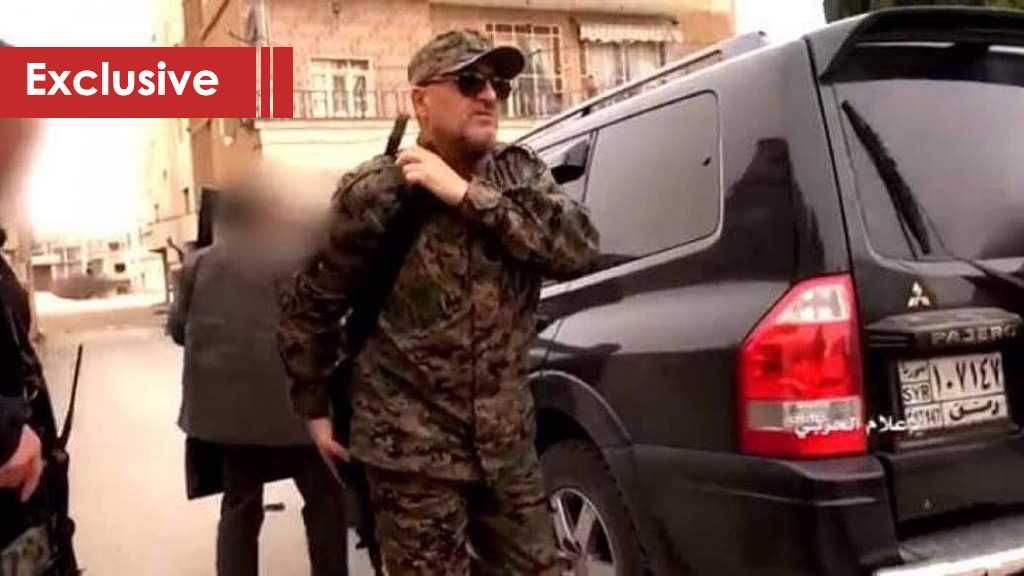
Location: The southern suburbs of the Lebanese capital Beirut
Time: Early 1998
The commander of the Quds Force in Iran’s Revolutionary Guard Corps, Colonel Qassem Soleimani, who recently assumed his position, visits the military headquarters of Lebanon’s Hezbollah movement. He embraces each of its officers – some have since been martyred, and others are still fighting on the frontlines. It is a very warm embrace between Soleimani and his comrades in arms. The great jihadi leader, martyr Mustafa “Zulfiqar” Badreddine, rushes to embrace the man. Soleimani responds with a warmer hug.
The video clip reflects an exceptional relationship between two revolutionaries, whose joint struggle transcended the borders of Lebanon and occupied Palestine. Syria, from north to south, passing through its desert and levant, is the scene of qualitative achievements and successive victories. It is hard to deny this. But to distort this conception, the Saudi media machine created rumors and lies about the tense relationship between the two martyrs. It held Soleimani responsible for the assassination of Badreddine and accused him of masterminding it.
How can men embracing gunpowder and fire every day – with one foot on the brink of death – possess all this passion? A mujahid recalls the two great martyrs. Those who look closely at their videos during operations to secure Damascus at the “Triangle of Death” (the southern countryside of Damascus-Daraa- Quneitra) in the winter of 2015 feel the warmth of their embrace and realize the scope of the relationship that was greatly distorted. The faces, known in the Western media as a threat to global security, display feelings that are difficult to decipher or put in a single sentence. But in a single moment they mobilize multiple phases of love, determination, and valor.
Comrades close to the martyrs report how Sayyed prepared to meet Hajj Bozork (the great hajj in Farsi). He liked calling him that. He rushed to receive him at the gate with a smile that seldomly appeared on his face. A strong hug. An extended meeting and insistence of fruits being cut and placed before the dear guest, despite his refusal and coyness.
People close to them also recount novels of passion during the battles. One of its chapters involves martyr Ali Fayad aka Alaa Bosnia. In the battles of Sahel Al-Ghab, in the north of the country, he carried out a tight ambush – an art he excelled in. He recorded it and quickly sent it to Sayyed. His voice could be heard in the recording.
Someone asked him: “Is x person there, behind the lines?”
He tries to hide it and eventually says “yes”.
The mediator insists on letting Sayyed know that Alaa sent x person to the ambush. For his part, Sayyed insisted that the video reach Hajj Bozork, saying, “He will be very happy with what Alaa did. Send the video and tell him what happened … Tell him that there are lovers among us who are racing to offer sacrifices for the sake of this nation’s pride.”
Another person who attended one of the last meetings recounted that Sayyed whispered to Hajj Qassem when he was bidding him farewell. “Send my regards to the Leader (the leader of the Islamic Revolution in Iran, Grand Ayatollah His Eminence Sayyid Ali Khamenei) … Tell him your son Mustafa sends his regards and is telling you that the load on Hajj Qassem is great, so pray for him.”
As for the last meeting, at the Damascus airport the night Sayyed was assassinated (May 2016), the farewell lasted for about a quarter of an hour. They were supposed to go out together and meet later that same night. Sayyed insisted on staying for a while, and Hajj insisted on staying with him.
“It is not polite of me to leave and you are still here,” Hajj said. Sayyed insisted that Hajj leave. He returned less than an hour later as the sound of the explosion that killed Sayyed roared. That day, Hajj Qassem cried a lot – not for missing the “sword of the resistance”, but for missing the moment and an opportunity to reach the “goal”.
On that morning, he said, “Sayyed Mustafa’s name was written on that projectile for him to go alone, and God chose for him the best conclusion.”
Those who look at the faces of these two men, see the dark nightmare they represent to their enemies. Those who look carefully at the stillness of their eyes and the estrangement of their spirits which is apparent on their faces when they stand on the berms, realize very well that this axis has enough love to stock up on for the major battles.
River to Sea
 Uprooted Palestinian
Uprooted Palestinian
The views expressed in this article are the sole responsibility of the author and do not necessarily reflect those of the Blog!
No comments:
Post a Comment